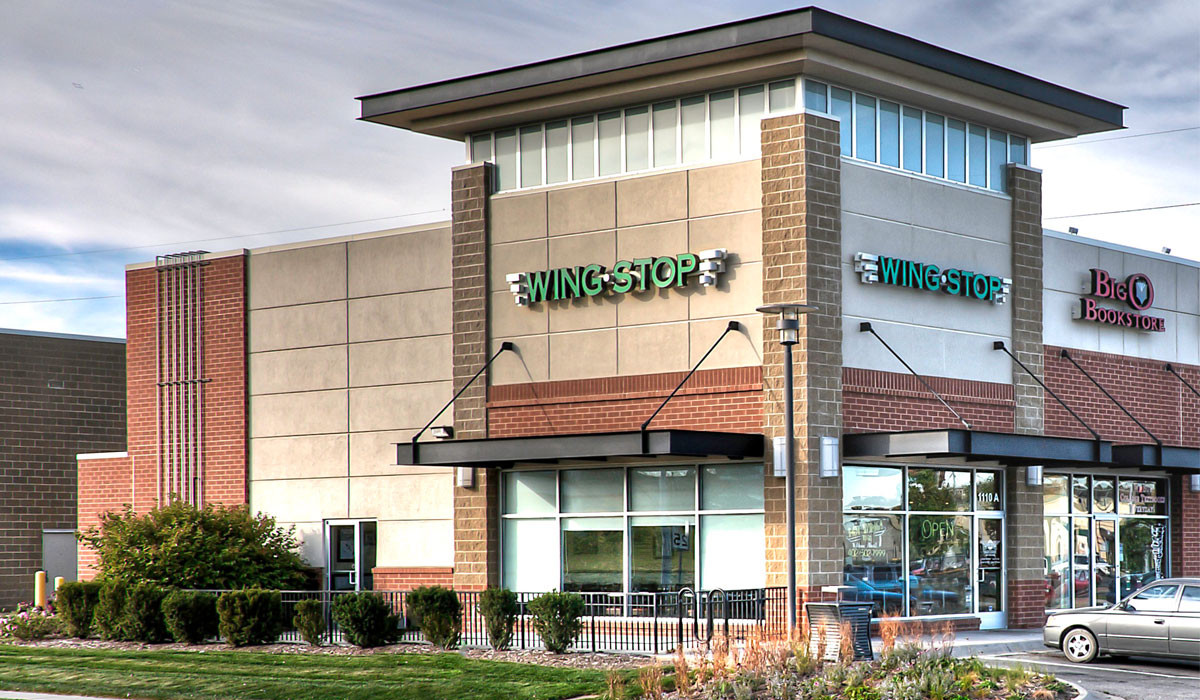Record-high wing prices forced Wingstop to take pricing actions in late 2017. One of the side effects: Ticket growth that boomed the 1,157-unit chain’s domestic same-store sales an eye-popping 9.5 percent in the first quarter versus the prior-year period. Systemwide sales jumped 20.4 percent to $313 million and Wingstop had revenues of $37.39 million (adjusted earnings per share of 25 cents). These numbers jolted the chain’s stock more than 7 percent in Friday afternoon trading. Shares are up 65 percent over the last year.
President and chief executive officer Charlie Morrison admitted during a May 3 conference call that Wingstop’s comps hike “does contain a little more ticket growth than we would normally prefer.” This was running about even for the brand with transactions, Michael Skipworth, CFO, said.
The change stemmed, in some ways, from Wingstop’s decision to offer split-menu pricing in light of commodity concerns. The chain reduced the price of boneless wings and conversely increased bone-in prices in certain cases. Read more about it here.
“We did see a mix shift associated with that,” Morrison said, “that have benefited the P&L upward of 200 basis points on food cost, which was great, but at the same time, put a little bit more lift in the ticket than we would have otherwise preferred.”
Even so, Morrison said Wingstop were “quite happy” with the comp performance, understandably. Momentum carried from the fourth quarter into fiscal 2018, and Wingstop relied on a very strong March to bolster figures.
The company increased its systemwide restaurant count 12.2 percent compared to Q1 2017 thanks to 22 domestic openings and six international ones. Wingstop wants to reach 2,500-plus units domestically and become a “top 10 global restaurant brand,” Morrison said.
Unit-level economics will be the key driver, he added. During Q1, favorable wing prices combined with the company’s leverage on labor and operating expenses resulted in a whopping 1,000 basis-point improvement to its company-owned restaurant margins. Same-store sales were up 12.5 percent at corporate units.
Morrison said Wingstop has four key long-term growth strategies it made progress on in the quarter:
- The initiation of national advertising
- Furthering digital expansion
- Implementing delivery
- Continued international development
On the first note, Q1 marked the lapping of national advertising from last year, which began just after the 2017 Super Bowl. Morrison said Wingstop designed its campaign to provide a multiyear benefit.
“We did not enter the market with a big splash, but rather designed a program that provides a steady cadence of presence on television. Our goal is to continue building brand awareness through television—a television presence that is combined with digital and local marketing efforts,” Morrison said.
Morrison added that having more ad dollars to spend this year would help Wingstop “narrow the gap with aided and unaided brand awareness compared to other national brands.”
Next, Wingstop’s digital sales accounted for 23.9 percent of total sales in Q1, up from 22.7 percent in Q4. About 74 percent of its domestic restaurants are generating 20 percent or more of their sales digitally. This has progressed from 49 percent in Q1 2017 to 67 percent in Q4.
Facebook and Twitter messaging, SMS, Amazon Alexa, and GM’s OnStar marketplace are a few of the innovations driving the expansion, Morrison said. And it’s happening organically.
“Unlike other concepts, we are not utilizing special offers or incentives to convert guests to digital ordering,” he said.
There is digital runway here as well. About half of Wingstop’s orders are coming in via phone, “which provides for further opportunity for digital conversion,” Morrison said. Digital orders are also carrying an average check $5 higher.
In Q4 of this fiscal year, Wingstop expects to launch a fresh front-end, guest-facing interface for its website and app.
Moving to delivery, the company’s test now includes more than 70 locations in Las Vegas, Chicago, and Austin, Texas. The initial Las Vegas pilot, launched April of last year, is showing a sustained 10 percent-plus sales lift. Chicago and Austin arrived in Q4. Morrison said those markets are seeing a mid- to high single-digital sales lift with similar levels of incrementality to Las Vegas.
“Our current focus is to work closely with DoorDash to optimize delivery in these markets and use our learnings as a foundation for a broader strategic national delivery rollout. Understanding how meaningful delivery could be to our business, we continue to believe the right approach is to take a market-by-market approach to a delivery rollout,” he said. “In doing so, we will be able to leverage rising brand awareness from our national advertising campaign and expand our DoorDash partnership as they scale to cover our footprint.”
The last note—international growth—remains a significant part of Wingstop’s target. At the end of the quarter, there were 112 Wingstops in eight international markets. This year, the chain plans to open in the U.K., France, Australia, and Panama. There are nearly 600 additional international Wingstops sold through development agreements.
Morrison said the company’s focus in 2018 is on successfully introducing the brand to new markets, and, in response, Wingstop won’t engage much in new international territory sales.
“We continue to see strong same-store sales growth in our international business, which is improving our strong sales to investment ratios in those markets. We remain excited about the expansion opportunity we have with our international business,” Morrison said. “We believe Wingstop is truly a brand and a category of one as we lack a true competitor and have multiple long-term sales drivers and a significant amount of white space in front of us for growth.












